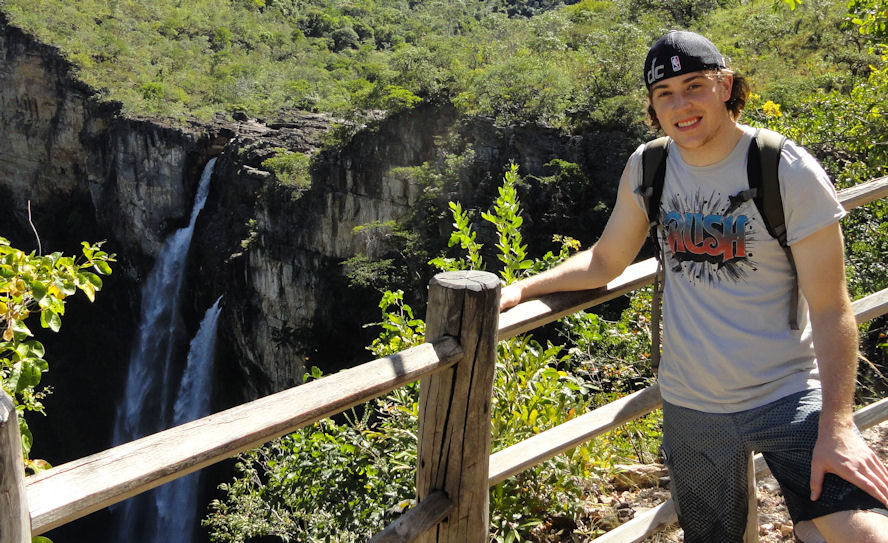
You don’t have to have a guide anymore to go into Chapada dos Veadeiros, but it is still a good idea. It supports the local economy and the guide can point out things you would otherwise miss. Our guide was very good, although he speaks only Portuguese.
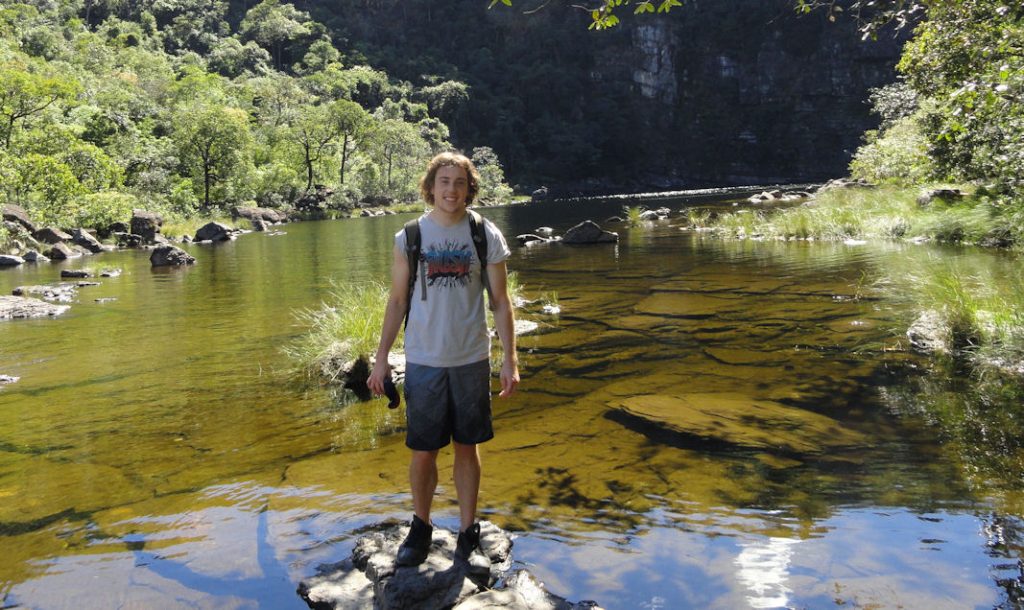
Local people made money by crystal mining. It was not an ecologically benign operation. Our guide told us that he was the son of miners and had mined himself for a time. By the late 1980s, most of the best crystals were mined out. Miners like our guide spent a lot of time sorting through the slag heaps. Some crystals that were considered too small in earlier times were the best they could do later on. Employing local people as guides gave them some income and also gave them incentive to preserve the environment. It seemed to have worked.
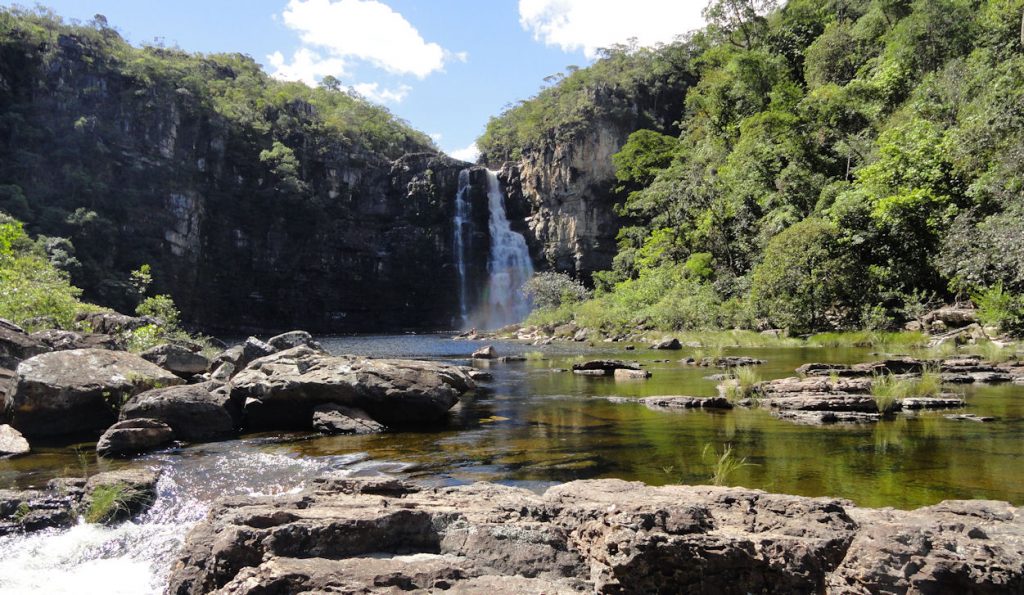
Our guide clearly loved the land and knew a lot about it. The only problem with him was that he could walk too fast. We took the waterfall route. We took the canyon route when I came with Chrissy a couple years ago. Both are really nice. Overall, I think the canyon route is a little nicer, but it is a close call. The waterfall route has more spectacular views, but the canyon route has more interesting ones in some ways. Maybe it would be a good idea to stay for two days and do both. Each hike takes about five hours. That includes a significant amount of time swimming or hanging around near the ponds and waterfalls. The walks are steep in places, but not very arduous.
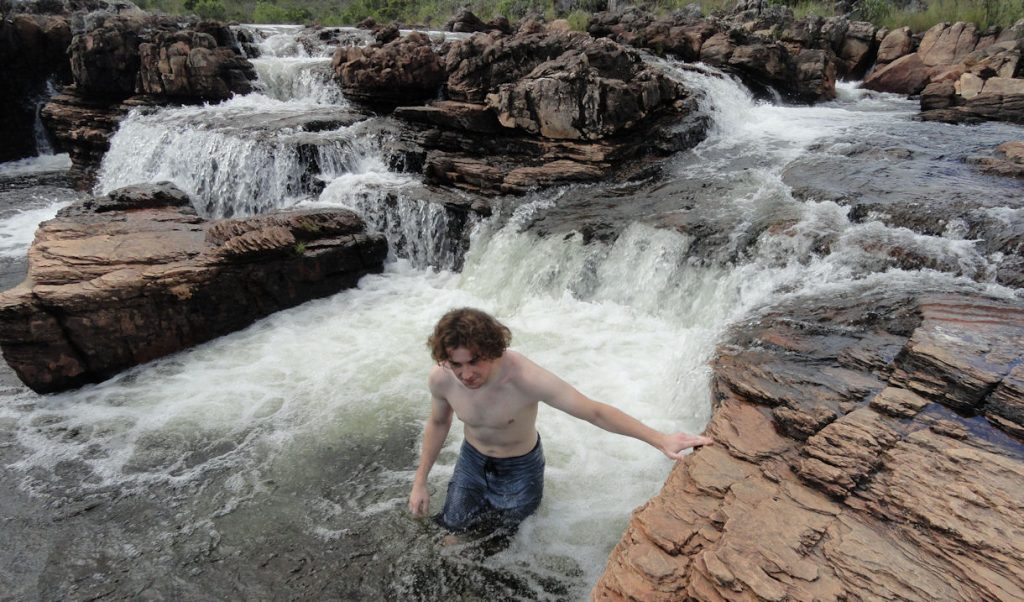
The climate here is pleasant. Because of the elevation, it rarely gets very hot and because of the tropical location it never gets cold at all. Seasons are wet and dry. Both times I visited were in the dry season. The area is semi-arid, but in a strange way. As in Brasília, it almost never rains during the dry season, but rains a lot during the rainy season, so it is very wet half the year and very dry the other half. The vegetation has to adapt to the more demanding dry season, so it looks like what you might find in parts of Arizona. As I wrote in the earlier post, São Jorge reminds me of Sedona and the area around is like parts of northern Arizona. One big difference is that there is no cold weather here. There probably has not been any frost here for millions of years, maybe never. The other big difference is water. There is lots of water during the wet season, which keep the rivers running and the lakes full during the dry season. It seems an anomaly to have so much water running through so dry a place.
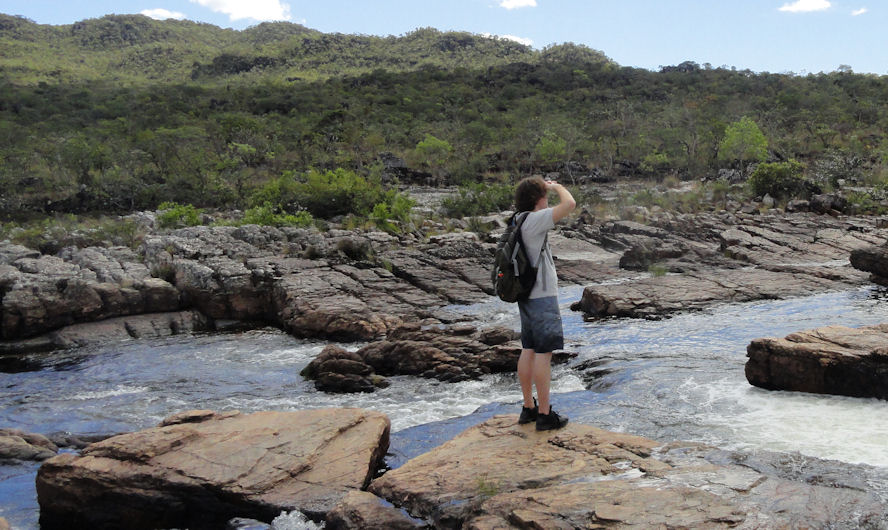
The water from the Chapada dos Veadeiros flows into the Rio Preto, which empties into the Tocantins River. The Tocantins is often thought of as a tributary of the Amazon, but actually is its own basin and empties independently into the Atlantic Ocean through the Amazon delta.
